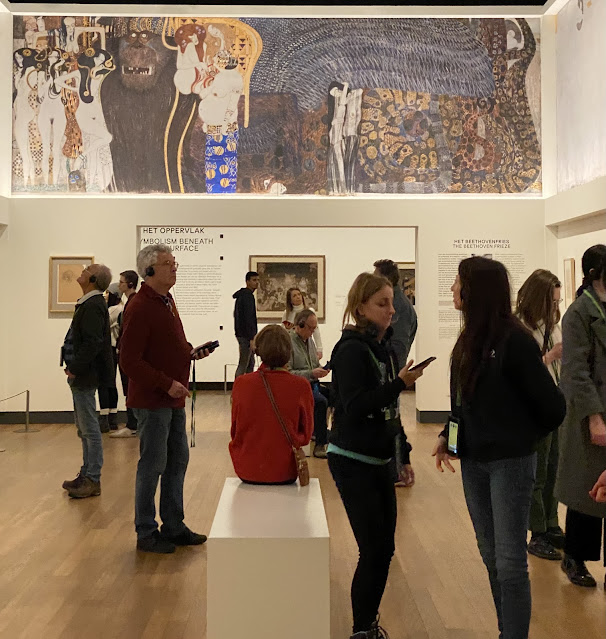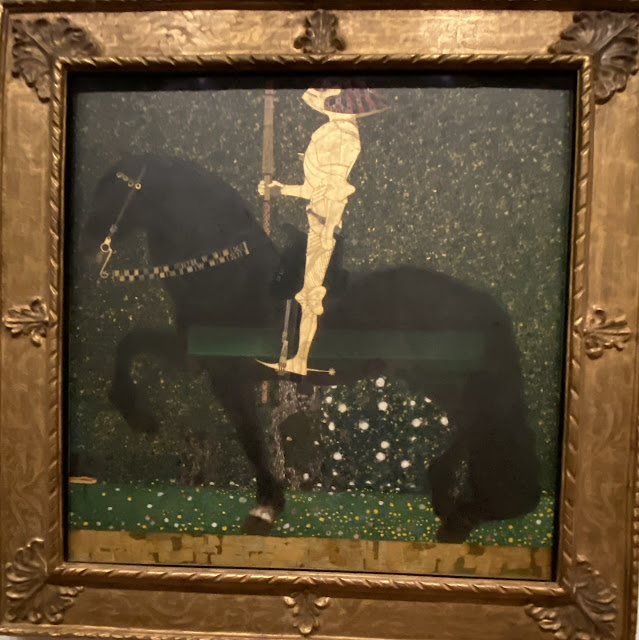 |
| Vienna Blood season 3: Max Liebermann played by Matthew Beard. (Image from amazon.com) |
The third season of the TV series Vienna Blood was recently completed, and I enjoyed it very much. The mysteries are well-constructed, the characters are fascinating, the costumes and interiors represent the beautiful style of Vienna from 1902 to 1908, and it's all remarkable. The series is based on the books by British author Frank Tallis. I read one or two of them a few years ago, and I've gone back to them now. I especially like Max and his fiancee Clara Weiss: so vivid!
Viennese Cuisine
A waiter arrived with a tray full of coffee and cakes: a Viennese walnut-and-apple torte topped with waves of cream and sprinkled with cinnamon and silver pearls, some poppy seed strudel, and a thick spongy wedge of guglhupf. (Vienna Blood, p. 128).
Liebermann’s attention was recaptured by the waiter, who had returned with his coffee and cake. The Mozart torte was a colorful checkered arrangement of chocolate and pistachio sponge, on top of which was a marzipan coin bearing the profile of the great composer. Liebermann took a mouthful, found it a little too sweet, and decided that the time might pass just as quickly with a cigar. (Vienna Blood, pp. 244-245).
The first course of cabbage and raisin soup had been very filling, but not sufficiently so to deter Stefan Kanner from insisting that the waiter should bring large helpings of Wiener schnitzel, Brussels sprouts, baked breaded tomatoes, and innviertler speckknödel (diced bacon mixed with chopped parsley, wrapped in dough and cooked in salted water). (Vienna Blood, p. 422).
They had dined on caviar, sardines, goose liver, and pheasant’s eggs in aspic, washed down with two bottles of Asti and followed by the sweetest pineapple. Coffee was served with cognac pastilles, each delicately wrapped in silver foil. They had intended to leave an hour earlier, but somehow satiety, slivovitz and cigars kept them seated. None of the other tables were occupied, and a hovering waiter suggested that they had overstayed their welcome. (A Death in Vienna, p. 340).
Mendel looked enviously at his son’s gateau, a large glazed chocolate sponge cake shaped like a saddle of deer, filled with apricot jam and studded with almonds. His own order was less arresting, being a simple pastry filled with sweet curd cheese. (A Death in Vienna, p. 11).
Did I go overboard in quoting all these delectable passages? I'd love to try ANY of them! To think that most tourists in Vienna just try the Sacher Torte and then give up!
Vienna, City of Art and Culture
Beyond food, I've collected a few bits of Viennese cultural richness from the novels -- remember, Vienna at that time was a global center of art, literature, medicine, and music, not the minor European city that it is today.
 |
| The Beethoven Frieze by Gustav Klimt, Secession Building, Vienna (1902) |
As Liebermann’s eyes became accustomed to Klimt’s over- whelming carousel of colours, he was able to appreciate a cast of characters who gradually emerged as distinct individuals. Emaciated, naked figures appealed to a knight in armour; a monstrous winged ape squatted amid a crowd of disturbing death’s heads and sirens: and a man and a woman – their bodies pressed together – kissed below a choir of angelic faces. Some parts of the fresco seemed cool and still, while others writhed with activity, every inch alive with movement: ripples, waves, swirls and eddies – vibrant detail, enlivened by the shimmer of appliqué mirrors. (Frank Tallis. A Death in Vienna, p. 170).
 |
| At the Vienna Opera where Max Liebermann goes to "The Magic Flute" under the direction of Gustav Mahler. |
He took her arm and they entered the building. After visiting the cloakroom and purchasing their programs, the Weiss family assembled at the foot of the grand marble staircase. Liebermann looked up into the vastness—the wide-open dizzying expanse above his head. It was so immense: the chandeliers and wall lights seemed like whole worlds, suns, planets, softly glowing in the void. Massive round arches surrounded the central space and, through these, other arches could be glimpsed. On tall square pillars stood seven statues representing personifications of architecture, sculpture, poetry, dance, art, music, and drama. They were like custodial gods, marshaling the glowing worlds through the infinite. And beyond the guardians, columns, and balustrades was an artificial sky of transverse vaulting, enlivened by the colors of shadowy frescoes—white, blue, and vermilion.
Liebermann was not a great lover of the opera. ... the music itself was usually not to his taste. He found it too rich, too excessive, too melodramatic. He much preferred the simplicity of lieder, the intimacy of a string quartet, or the abstract purity of a symphonic work. Even so, he was eager to hear The Magic Flute again. The reviews had been exceptionally positive. Even the critic Theodor Helm—in the traditionally anti-Semitic Deutsche Zeitung—had praised Director Mahler’s new production. The director had reduced the size of the orchestra and encouraged them to play in the style of a chamber group. Liebermann was convinced that he would find this treatment of the work particularly rewarding. (Frank Tallis. Vienna Blood, p. 228-229).
Blog post © 2023 mae sander. Images from advertisements and Wikipedia.









































